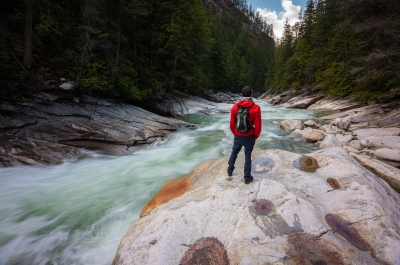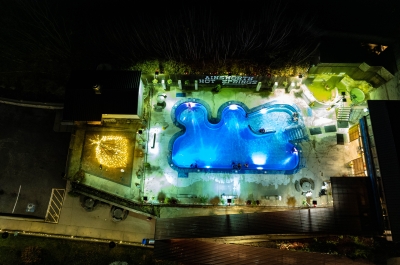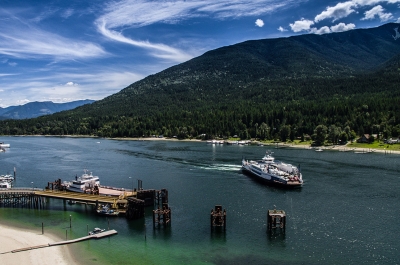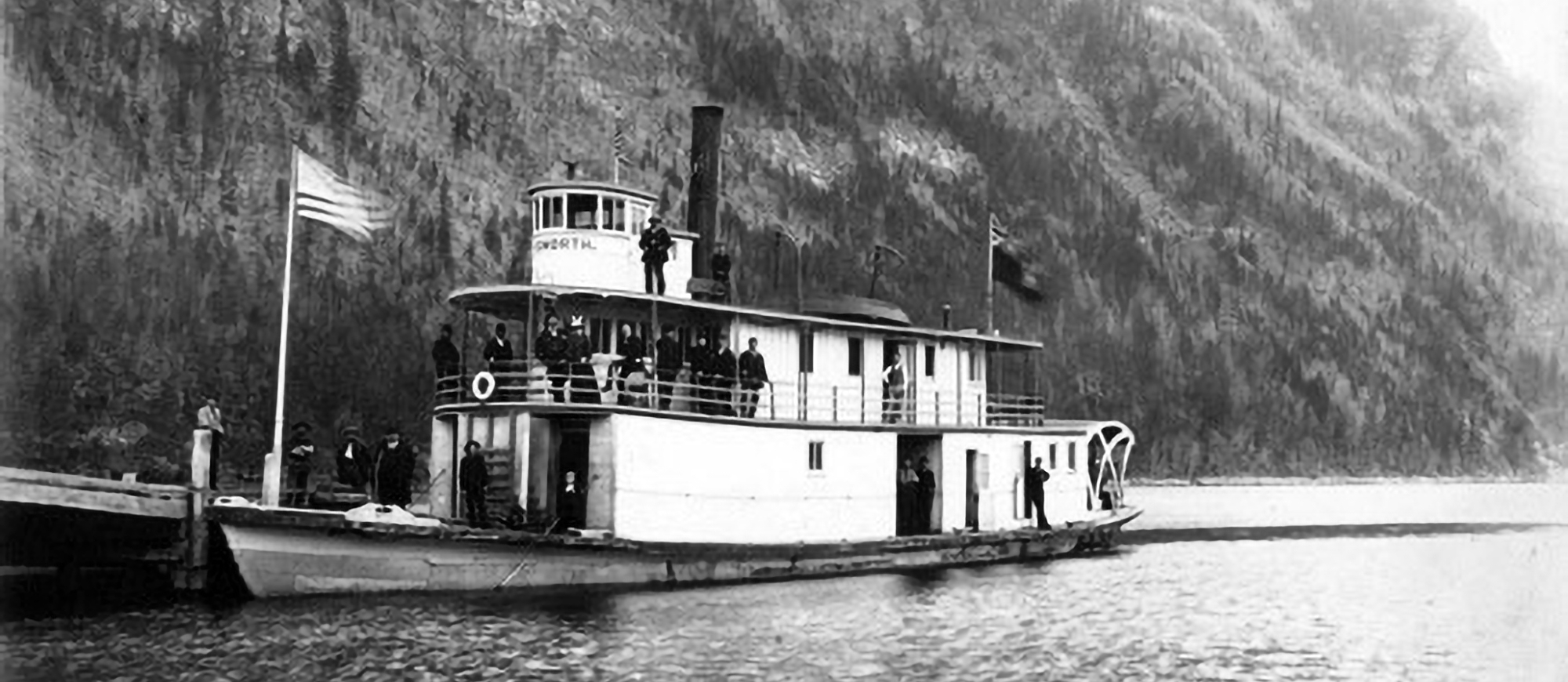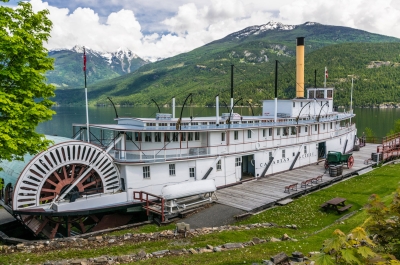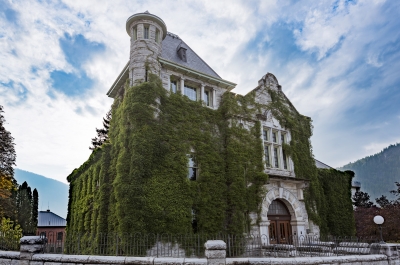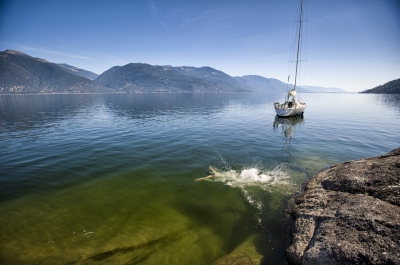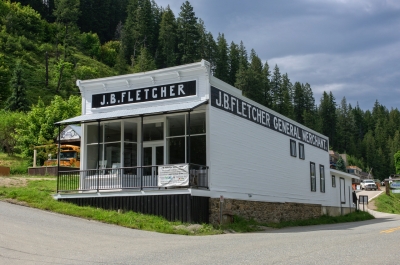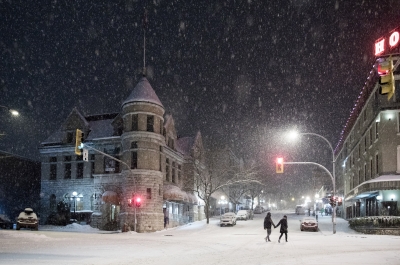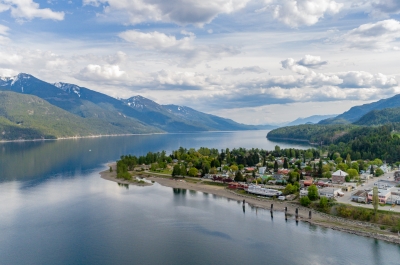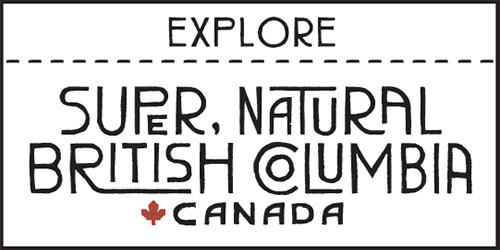Exploring the Shipwrecks of Kootenay Lake
Exploring the Shipwrecks of Kootenay Lake
Paddling the surface of Kootenay Lake can often give a renewed sense of love and respect for this lake that all our communities are centred around. Spending time of the water reminds us of times gone by, when Nelson and the Kootenay Lake area was at the height of the mining boom times, when stern wheelers ruled the lake.
Kootenay Lake: One of the Deepest in British Columbia
Kootenay Lake is one of the largest lakes in British Columbia. She's also one of the deepest. With depths that vary from so shallow that occasionally sand bars rise along the centre of the lake to 150 metres down, Kootenay Lake holds mysteries beneath her surface. As you paddle along, occasionally a bit of history peeks through the surface, or is just visible as you peer below. In other parts, the topographical map one uses to navigate along the lake, provides a clear sense of the history far beneath the surface of the lake, hidden deep among the caverns and valleys on the bottom of Kootenay Lake.
For freshwater scuba divers, there is lots to explore in Kootenay Lake.
The Deepest Dive in Canadian History for the S.S. City of Ainsworth
Not as well known as some of the coastal waters, Kootenay Lake is still ripe with lots to explore, often just below the surface and easily accessible to divers. There are also mysteries, inaccessible to everyone but the most experienced divers, and then only with lots of preparation. One such mystery is the S.S. City of Ainsworth, a sternwheeler that sank in a storm in the middle of Kootenay Lake to a depth of120 metres on November 29, 1898. Lost at the bottom of the lake, she remains there to this day. In 1997, the Cambrian foundation completed the deepest dive in Canadian history when they spent 10 minutes filming the wreck.
Today, the S.S. City of Ainsworth is a Provincial Heritage Site. Perhaps not the most popular tourist site in our area, she may very well be our most intriguing.

The S.S. Ymir Holds the Best Geocache in the Kootenays
More accessible than the S.S. City of Ainsworth, several other interesting wrecks rest under the surface of Kootenay Lake, and can be carefully explored by divers. Right under our Big Orange Bridge, for example, and very near the RCMP headquarters are a couple wrecks: One of these is the S.S. Ymir, located approximately 52 ft under the water. In fact, this is the site of a geo cache. You can watch several videos to help you out, and there are also pretty detailed instructions on the Geo Cache site. The comments on the Geo Cache page note that the log book is nearly full (two years ago, actually) and that this is the best Geo Cache location in the Kootenays. So close to home!
More Accessible and Still Intriguing: The S.S. Hosmer
Another tug boat that sank nearby, but is much more accessible, is the Hosmer. Near Bealby Point, just past John's Walk and near Red Sands beach, the S.S. Hosmer is actually visible from the surface for most of the year. The boiler sticks up out of the water, while the rest of what remains of the tug boat lies just beneath the surface, and quite close to shore. If you'd like to do some rather tame exploring of an old shipwreck, the Hosmer is a good place to start.
The S.S. Nelson and Her Firey End
Though quite a few tugs and sternwheelers ended their careers on the bottom of Kootenay Lake than you'd expect, most did so in a rather peaceful way. Not so the S.S. Nelson. Unfortunately, you can't explore the S.S. Nelson but the story is too good to pass up. She ended her career by being set on fire on Kootenay Lake as part of the Chahko Mika festival on July 16, 1914. The Chahko Mika festival, named for the Chinook pigeon word meaning "You Come", was a huge festival lasting several days and encompassing water sports, land sports, a parade, and, evidently, a large "Viking Funeral" where the S.S. Nelson was burned on the lake.
The Phoenix Pioneer reported that the Scandinavian Aid and Fellowship Society won for best float during the Grand Parade. Oddly, in that article, no mention was made of the "Viking Funeral" later that day.
The Opulent 60 Meter (196 feet) Long S.S. Kuskanook — Easily Visible from Near Kokanee Park Marina
Another sternwheeler that can be easily explored is the S.S. Kuskanook. It is actually visible in March, and is located at Kokanee Landing Road, near the Kokanee Park Marina. This boat, in her heyday, was the finest of the sternwheelers to be used on Kootenay Lake. She cost $104,145.37 to build, of which, $10,000 was for interior fittings. Today, none of that opulence is obvious. Still, it is quite something to see her entire hull, nearly completely visible from shore. The boat is 60 feet long, and had 37 staterooms, a large dining room and could hold 450 passengers. She was the fastest boat on the lake, meant to meet the train at Kootenay Landing back in the day. She worked from 1906 until 1931, when she was put out of commission, and then sank in 1936.
The S.S. Moyie: National Historic Site and an Easy Visit to Kaslo
Of course, if you'd rather not don a wet or dry suit and scuba gear, you can always visit the S.S. Moyie in Kaslo. The S.S. Moyie stayed in service after the S.S. Kuskanook was taken out of service, and kept working for 59 years. Serving up to 400 passengers, with a 4 tabled dining room seating 24, her steel hull weathered storms and years of work. The S.S. Moyie is now a National Historic Site, and lovingly preserved for visitors to tour.
Kootenay Lake has so much to explore, from the S.S. City of Ainsworth 120 metres down to the S.S. Moyie resting on the surface. Come for a visit soon and explore our lake and all she holds within.
The Region
TRAVEL BOOK
Read our visitors guide online or order a copy of the official visitor's guide and map for our region.

